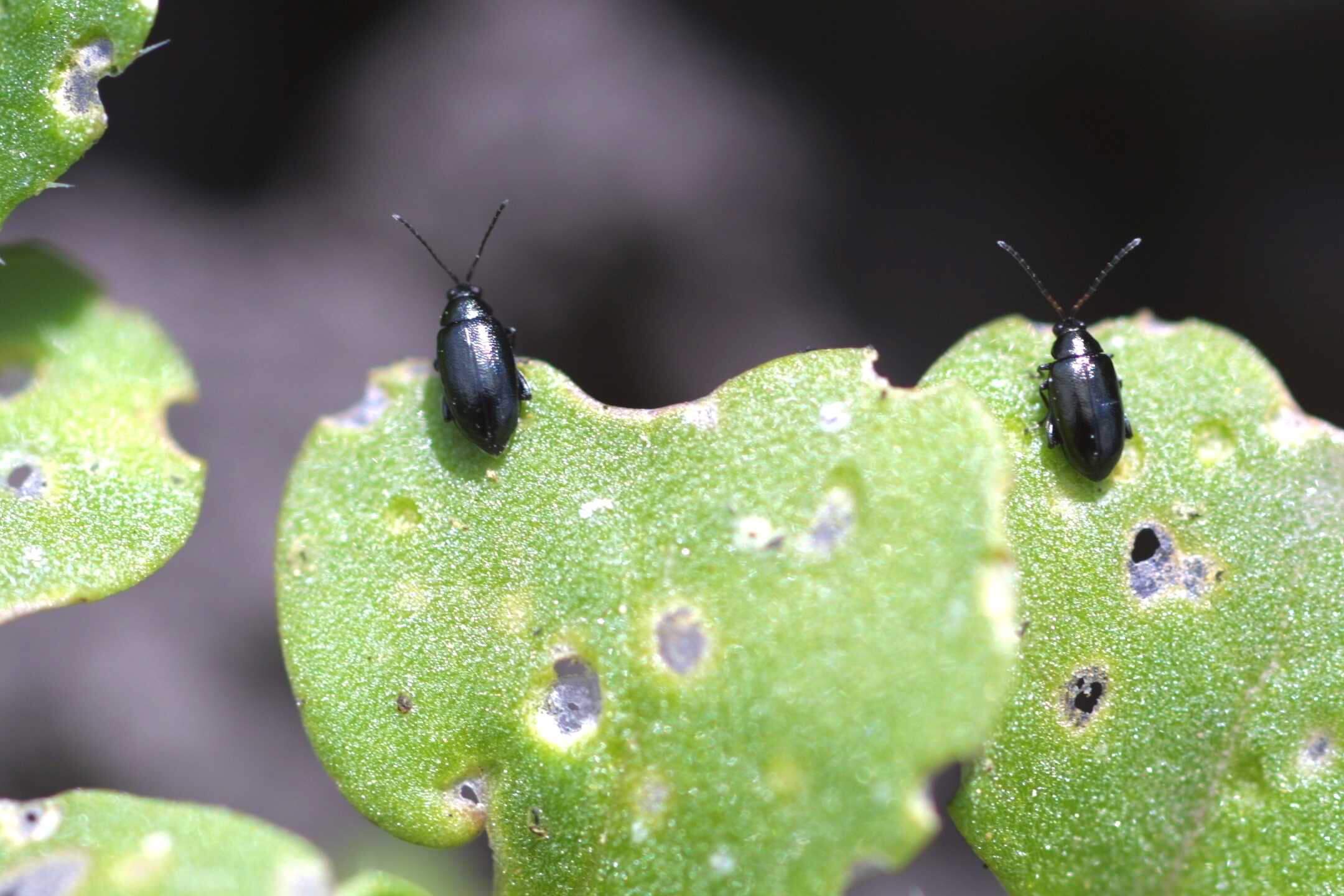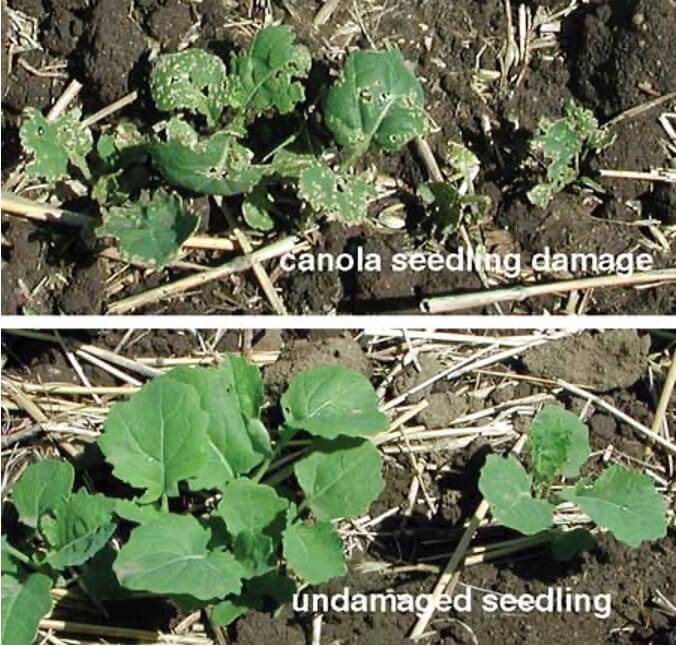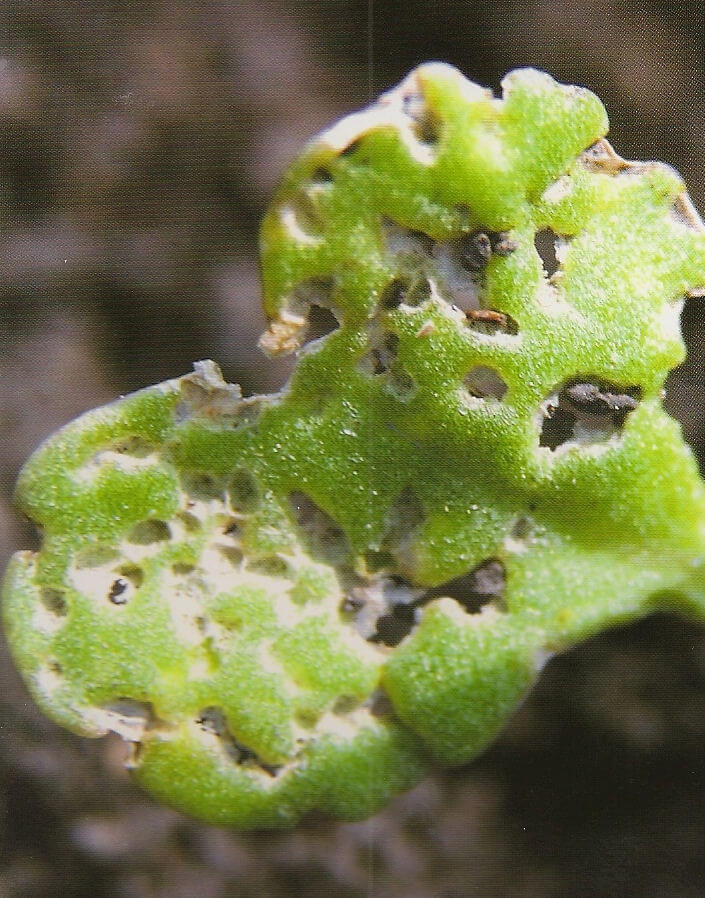Flea Beetles
Phyllotreta cruciferae

Crucifer flea beetle adults.
|
Flea beetle damage. |
25% flea beetle damage. |
Flea beetles are very small, shiny black beetles with enlarged hind femora that jump quickly from pants when disturbed. There are several species of flea beetle that can infest canola, but the crucifer flea beetle is a specialist on this family of plants and finds canola very attractive. This species was introduced from Asia around 1920 and now causes >$300 M in damage to canola every year in North America. Wild mustards are alternative host plants that can be a source of crucifer flea beetles, and they are also known to build large populations in forage crops that then move to neighboring fields in the fall when the forage is harvested. Feeding by adults typically appears as numerous ‘shot-holes’ in the leaf, but these may coalesce into large, necrotic patches. Damage to winter canola is most serious when newly emerged adult beetles feed on seedling plants in the fall. Heavy attacks can kill seedlings, especially under dry conditions when plant growth is arrested, and result in significant stand reduction.
Management
Scout field margins first, as adults have limited mobility and will be moving into the field from the edges. Cotelydons can withstand up to 50% defoliation without yield loss Although the economic threshold is 50% defoliation of true leaves, adult feeding progresses quickly, so action is usually recommended at 25% defoliation. In addition, there is no guarantee that fields will not be re-infested if beetle migration continues. Most insecticides registered for flea beetle control are broad-spectrum neurotoxins that risk disrupting biological control of other pests in the crop, although the risk of this is much lower when seedlings are still small. Formulations containing spinosad as the active ingredient will be more selective for beneficial species. Treatment should be applied immediately when threshold populations are detected.
For more information on flea beetles, see publication MF2832.
Created 04/02/2024 by J.P. Michaud.

